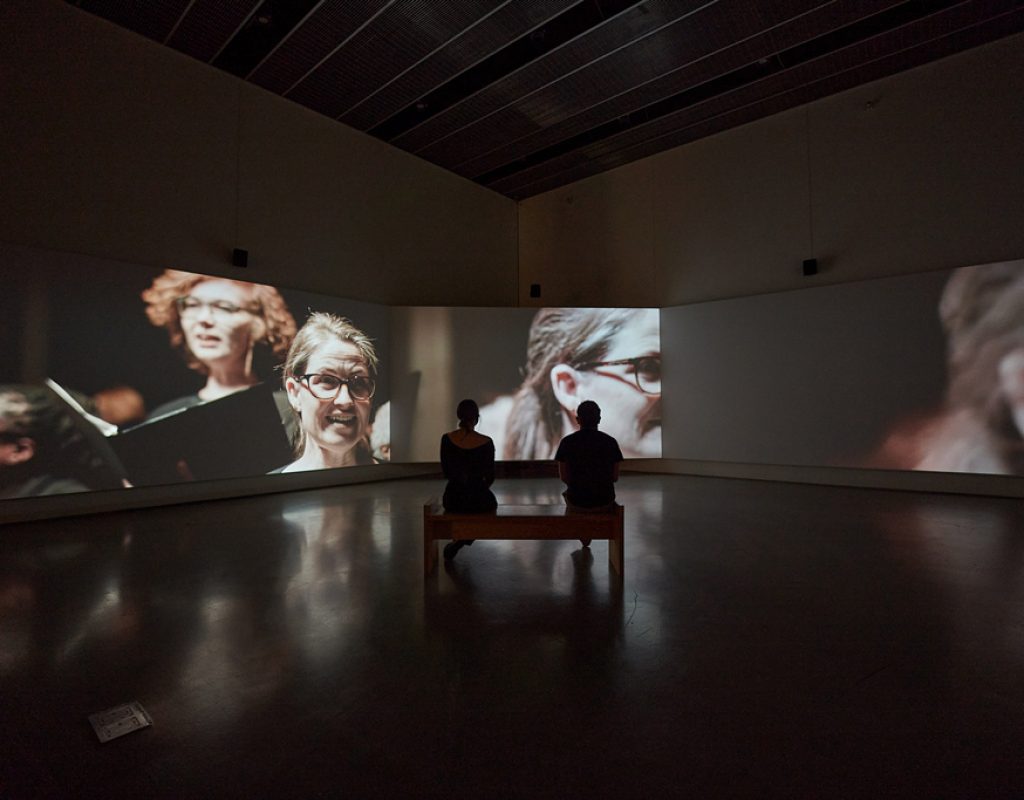
Sounding Labor. Silent Bodies
Curators
DETALLES DEL PROYECTO
Produced over the course of two years and several visits to Cincinnati, Sounding Labor, Silent Bodies features historical visual ephemera alongside a new suite of work that examines the contradictions present in the rhetoric of progress that accompanied America’s industrial past. Often mediated through the body, Candiani’s work recognizes the politics of voice and insists on the expressive potential of repetitive movement, forming what the artist calls “a choreography of labor.”
Sounding Labor, Silent Bodies highlights women as a corrective to dominant historical narratives that excluded their role as factory workers, and suggests parallels with current struggles against gender inequality.
Commissioned by CAC Contemporary Arts Center, Cincinnatti, US
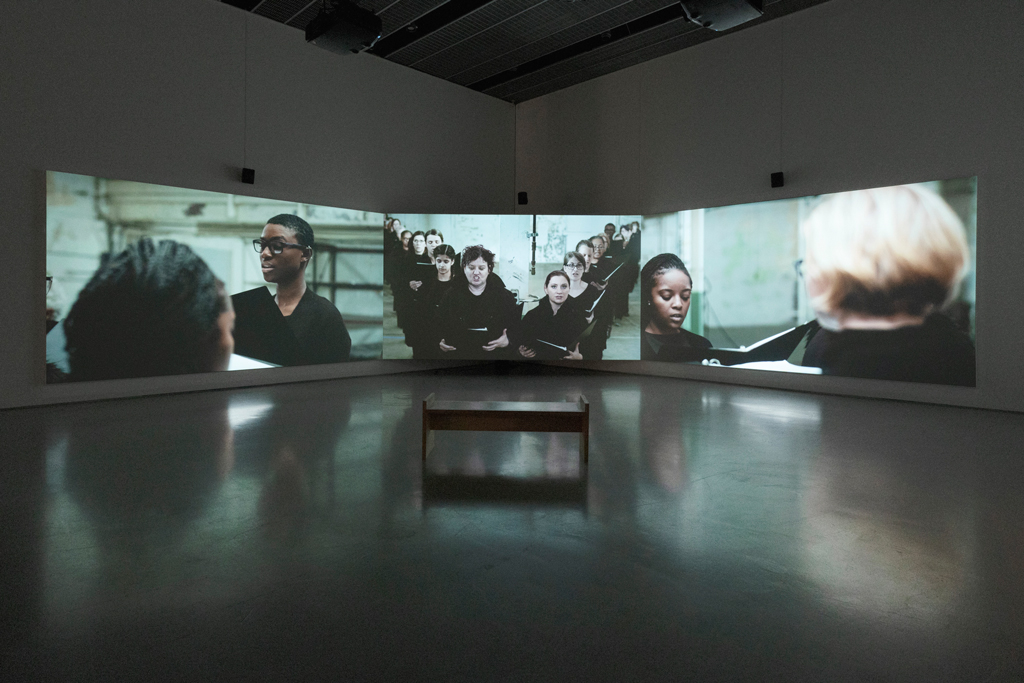
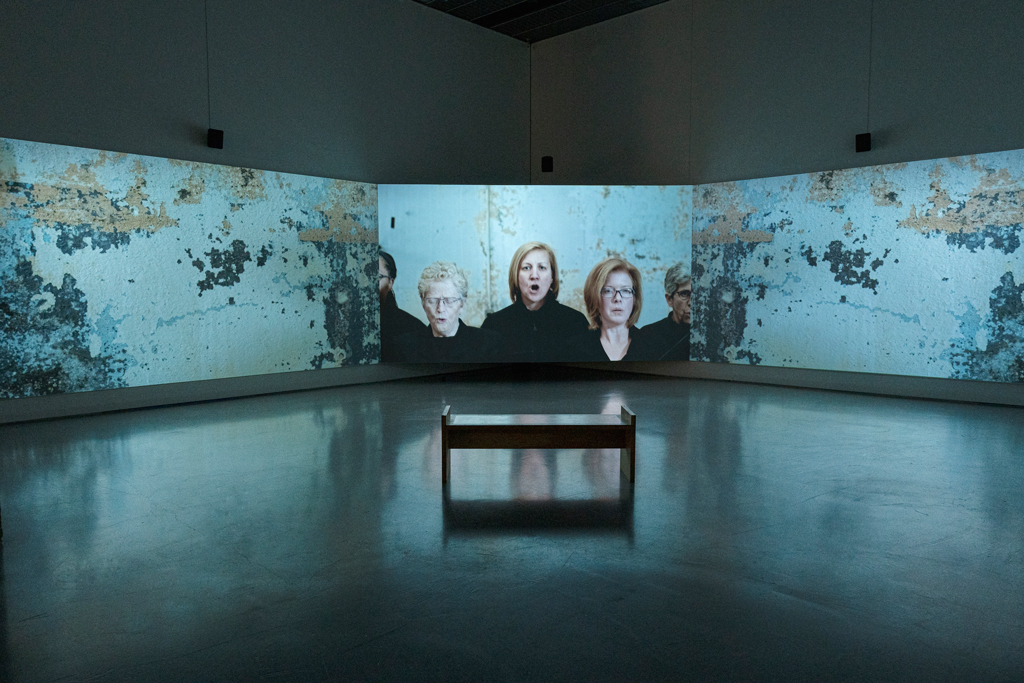
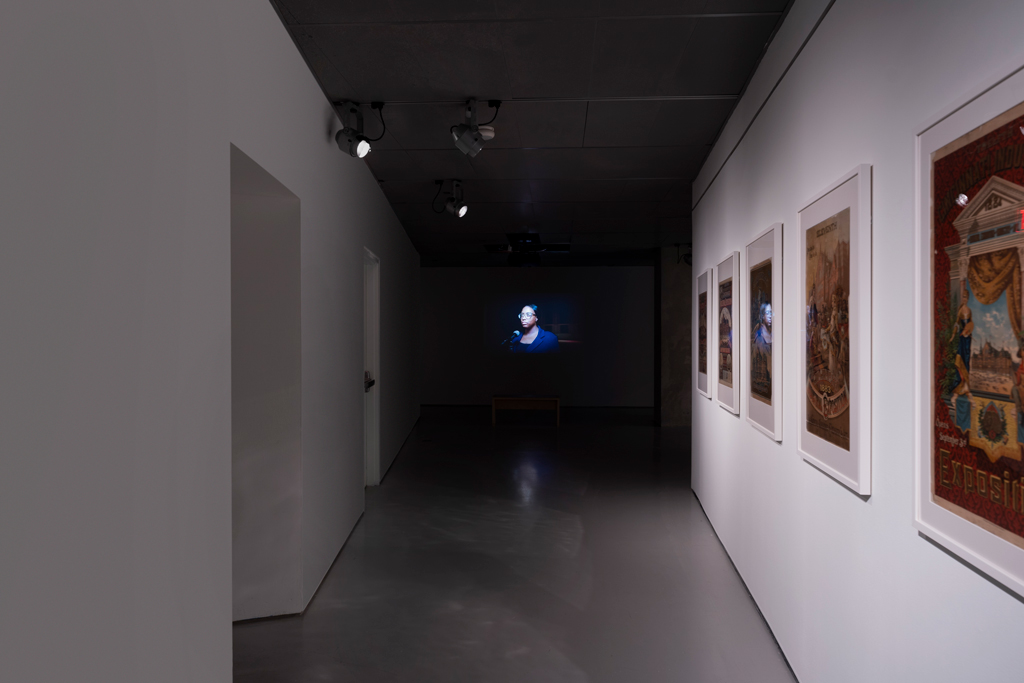

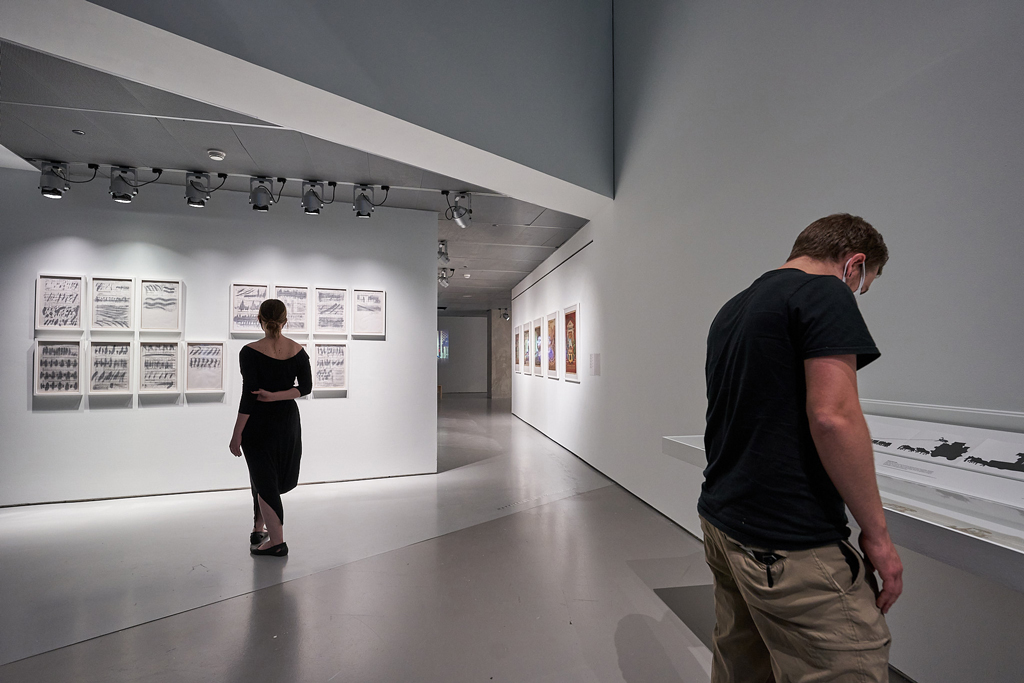
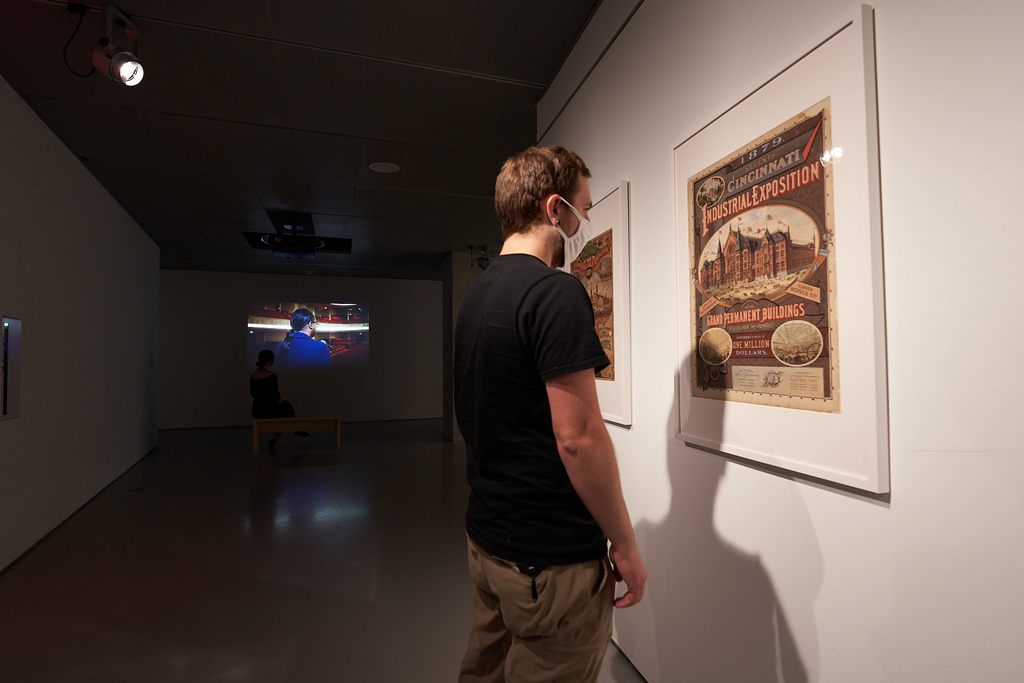
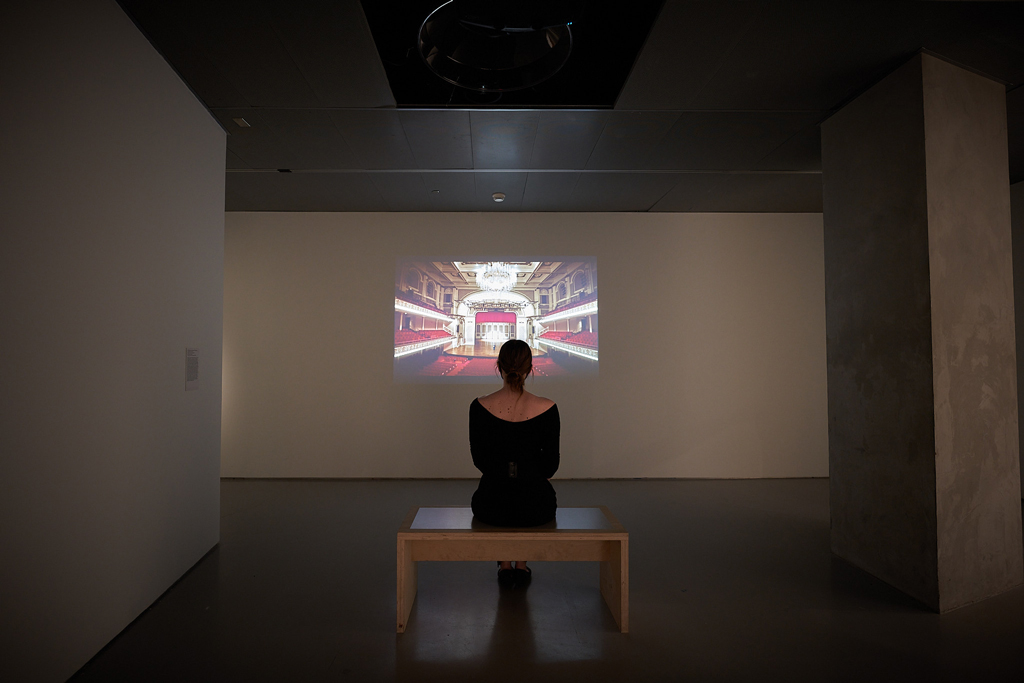
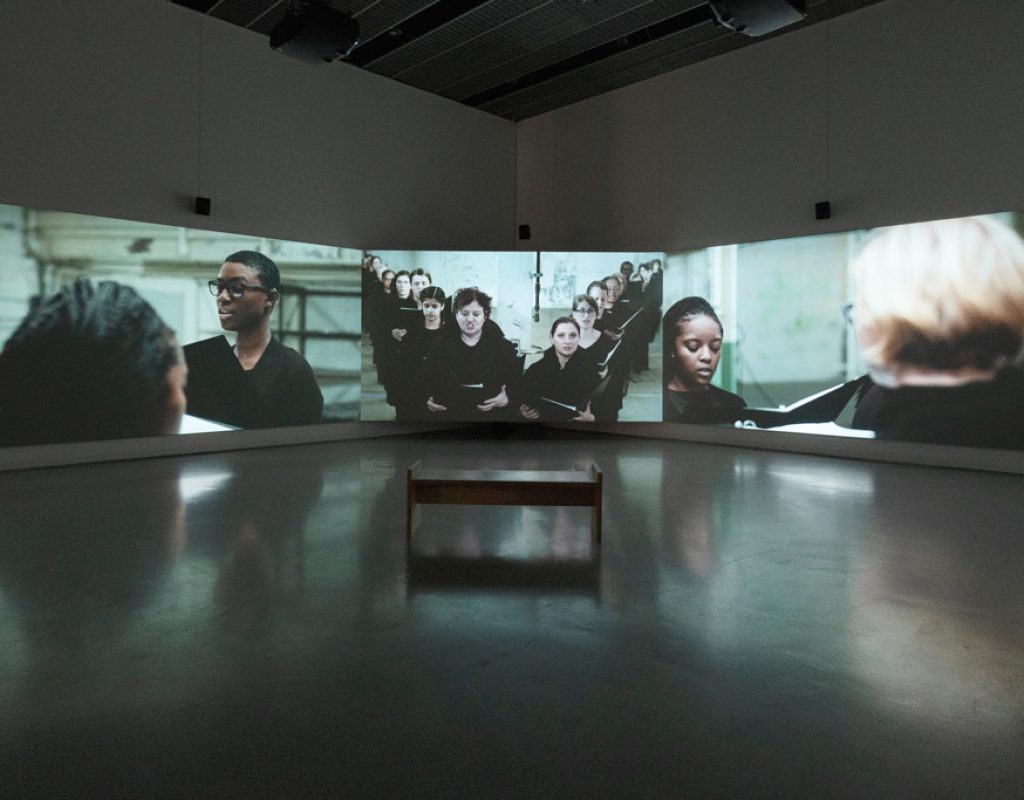
Four Industries
Data sheet
Credits
DETALLES DEL PROYECTO
This piece forms the backbone of the Sounding Labor project. Silent Bodies that examines the contradictions present in the rhetoric of progress that accompanied the industrial past of the United States. It consists of a three-channel video where an a cappella women’s choir replicates sounds associated with some of the major industries of the late 19th and early 20th centuries: metal foundry, meat industry, printing, and carpentry. These sounds became extinct as a result of the obsolescence of machines and the disappearance of forms of manual work, and their reproduction represents the rescue of the artifact from sound memory. The choice of a women-only choir responds to the historical contempt for female labor and its contribution to the production system. The movement of the camera accentuates the mechanization imposed on the bodies, poetically reflecting the methodical trajectories of the machinery.

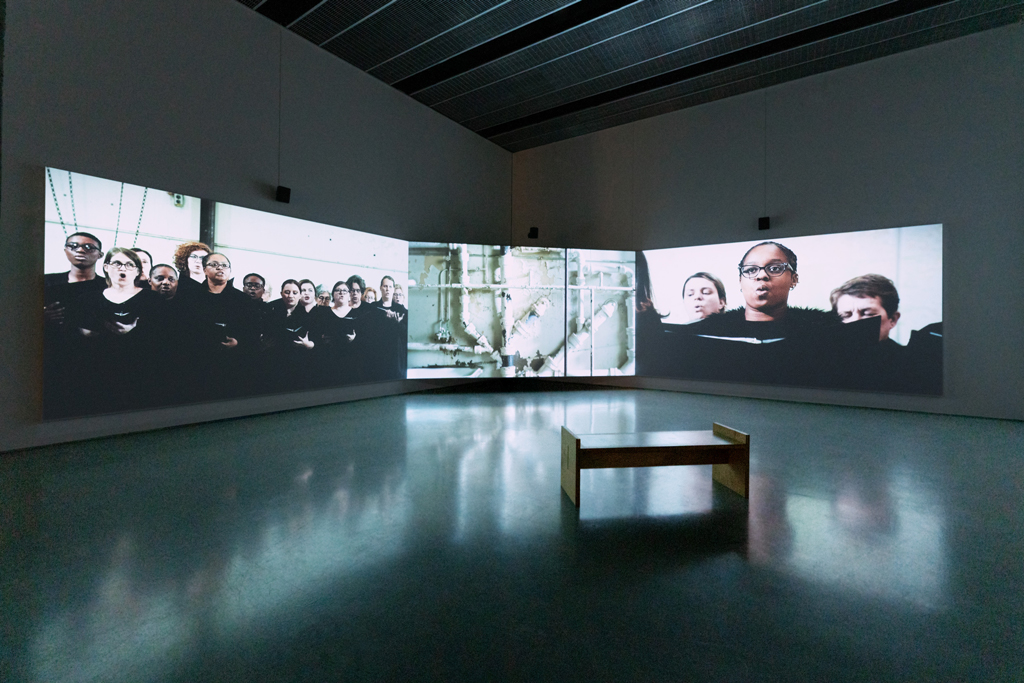
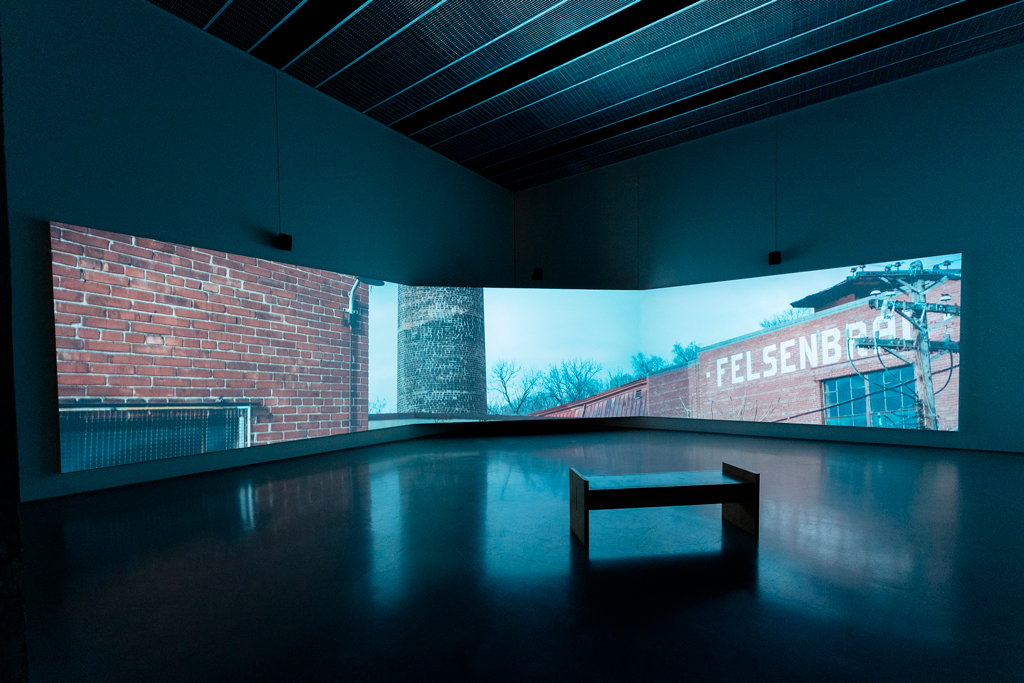
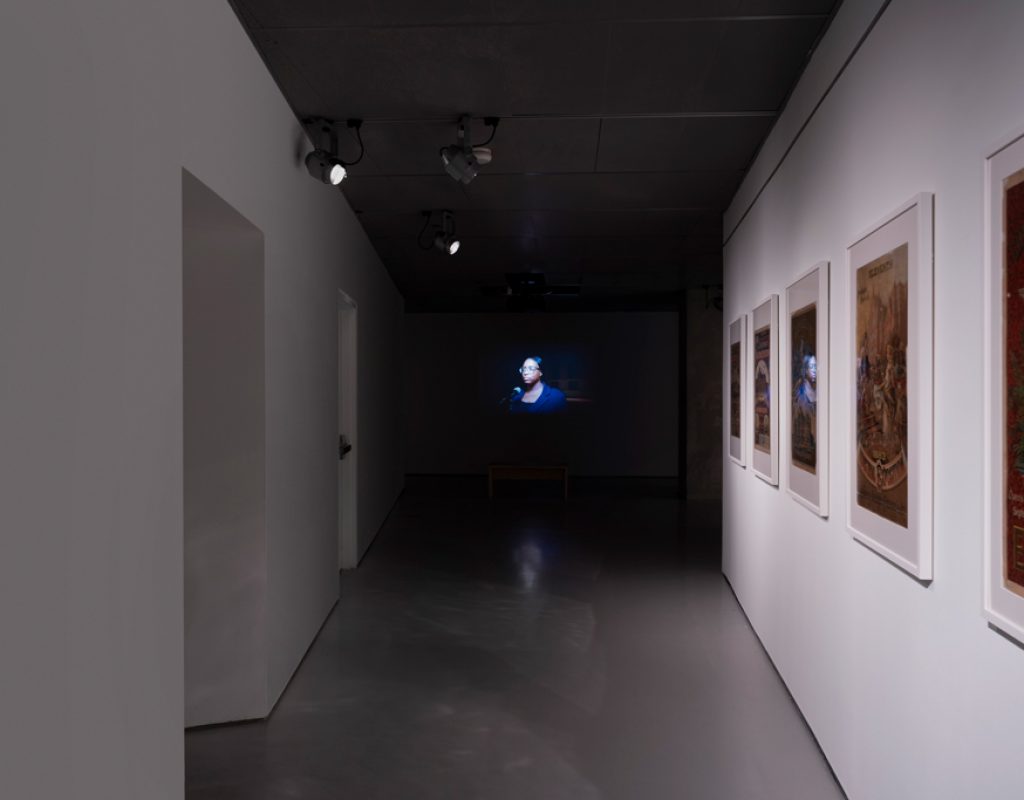
Speech for an Empty Theater
Label
DETALLES DEL PROYECTO
Filmed in Cincinnati’s Music Hall, Speech for an Empty Theater features a woman reciting a composite of phrases from the opening addresses of Cincinnati’s Industrial Expositions to an empty auditorium. The content of these speeches were highly patriarchal and dismissive of pre-settlement populations: “… [Our] State is proud as … she has reclaimed our territory from the barbarism of a wilderness, made it to bloom and blossom like a rose, and beautified it with all the adornments of civilization.” Following the ancient Roman model, 19th century American art sometimes used female personi- fications of concepts and places. The address concludes, “Let there be no black or white, nor rich or poor, but only man; no distinction of nobility …” These utopian social ideals promised by industry were ultimately never realized and point to the fact that, although the Industrial Expositions claimed to champion progress, they were products of an inequitable society.
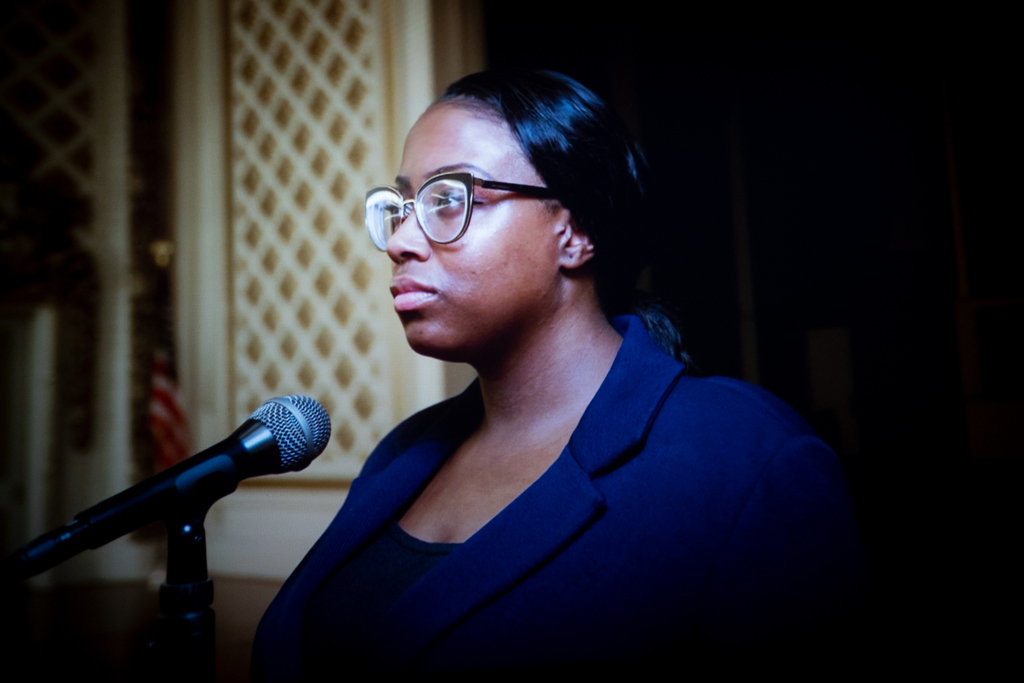
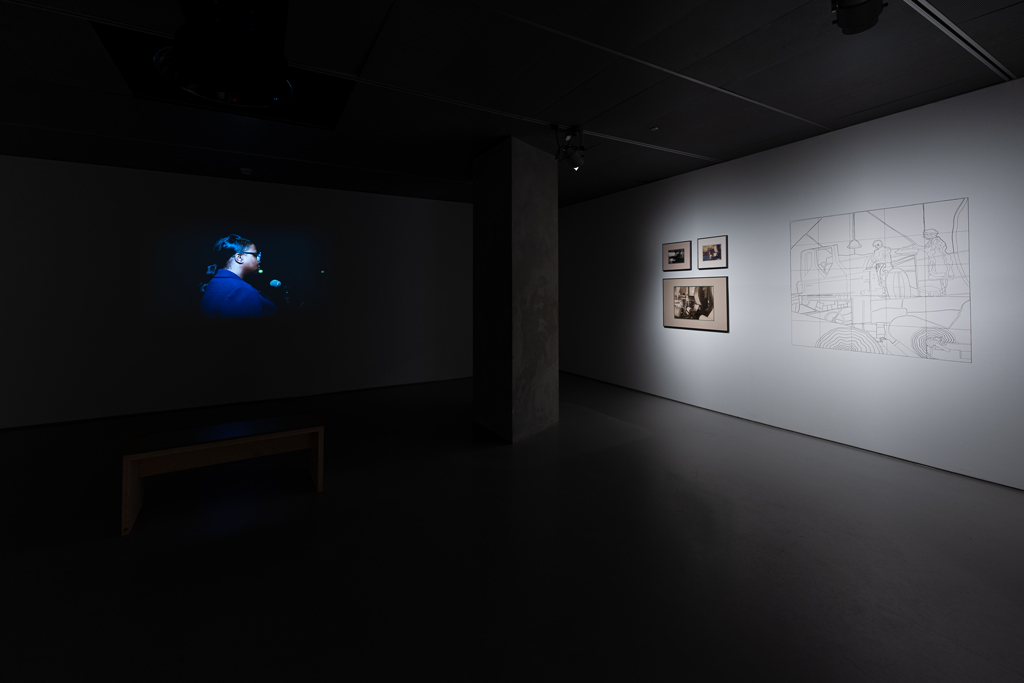

Score of Four Industries
Label
DETALLES DEL PROYECTO
Produced in collaboration with composer Rogelio Sosa, and rendered by Tania Candiani in ink, Score of Four Industries consists of four movements, each dedicated to a particular trade, including metal casting, meatpack- ing, printing and woodworking. The score makes use of conventional musical symbols and marks used to indicate tempo, duration and pitch, such as staff lines, notes and rests. In addition, the artists have added vocal guidelines and descriptors related to each industry. For example, the Iron Industry’s movement features verbal notations above and below the staff lines associated with the act of metal casting that read “fire,” “foundry,” “hammering,” “cooling hot metal” and “steam.” Paired with transcriptions of the vocals that include passages such as “Ch-Ch-Shhhhh- hh” and “Ki-Ki-Shhhhhhh,” the score offers insights into the historical industrial processes and the sources for the sounds that one hears during the film.

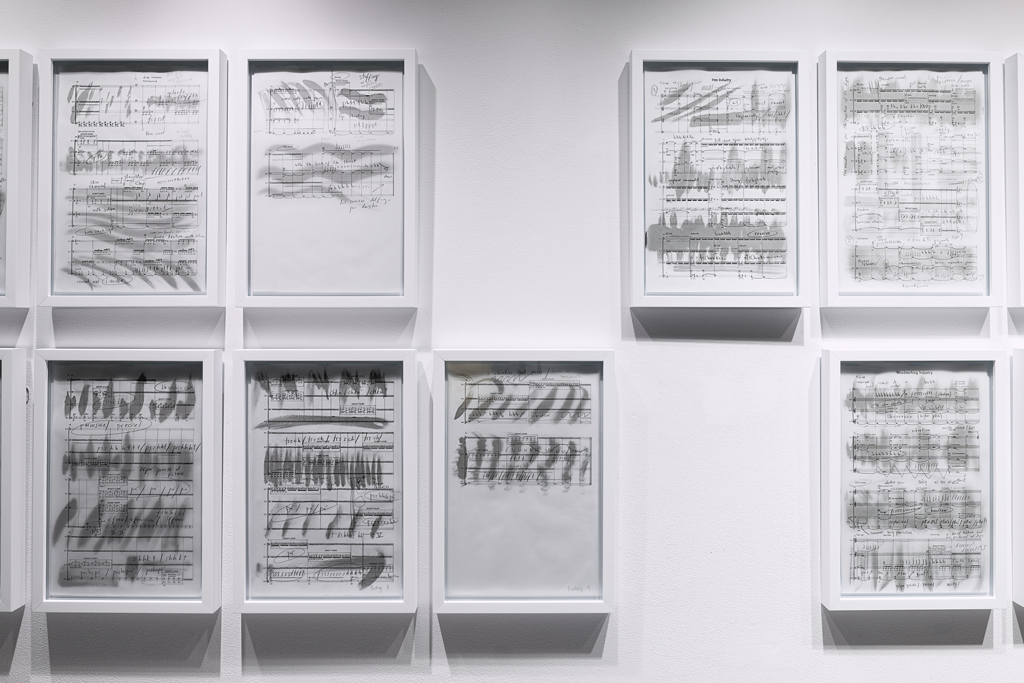
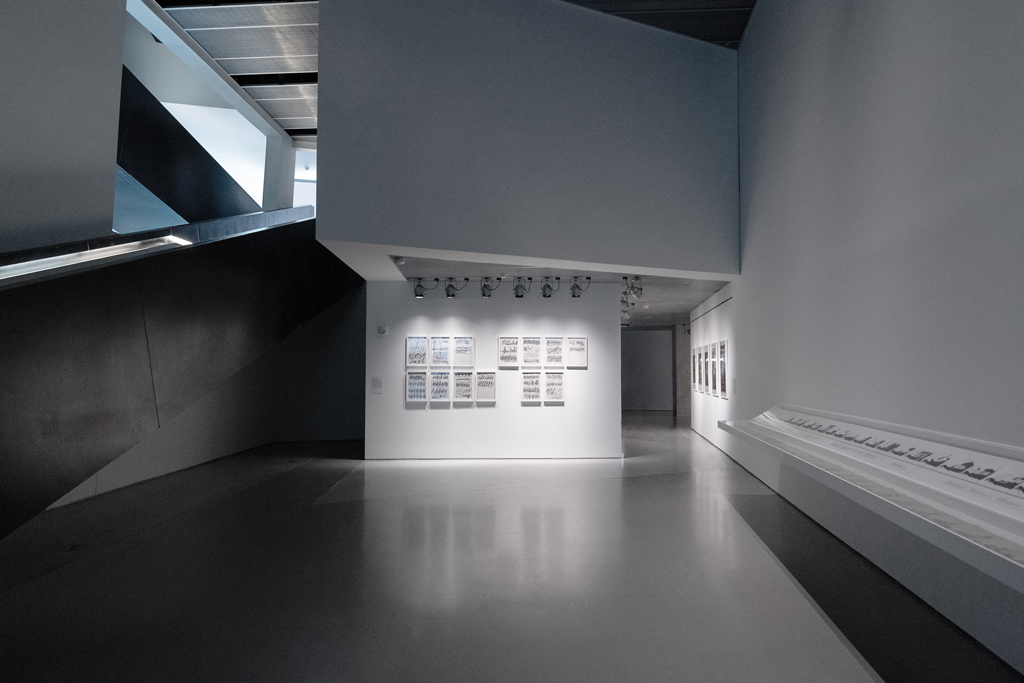
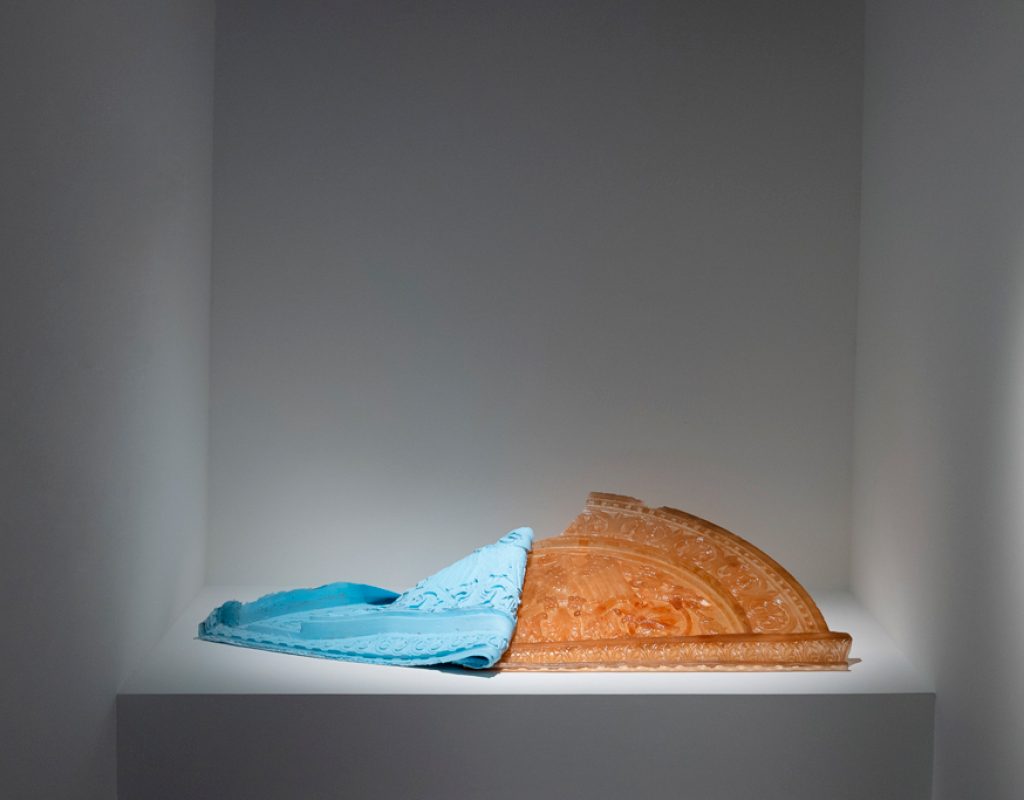
Divided We Fall
Label
DETALLES DEL PROYECTO
Divided We Fall features a cast fragment of a moulding detail depicting a winged eagle taken from an interior wall at Cincinnati’s Music Hall. Originally positioned over a stage door intended for performers, the moulding detail demonstrates the care given even to the rarely visible areas of the building. Characteristic of the building’s renowned 19th Century revivalist Gothic Architecture, the eagle is framed by a swirling vine pattern reminiscent of a coat of arms. An emblem of European nobility that can be traced back to ancient Rome, the heraldic eagle was appropriated as the seal of the United States, and is a symbol of national freedom. Rendered in raw fiberglass and with its rubber and plaster shell, the motif appears devoid of its prior grandeur and is exposed as a fabricated duplicate. Like Speech for an Empty Theater, Candiani’s cast is an allusion to the hollow rhetoric and contradictory symbolism that accompanied America’s Industrial period.
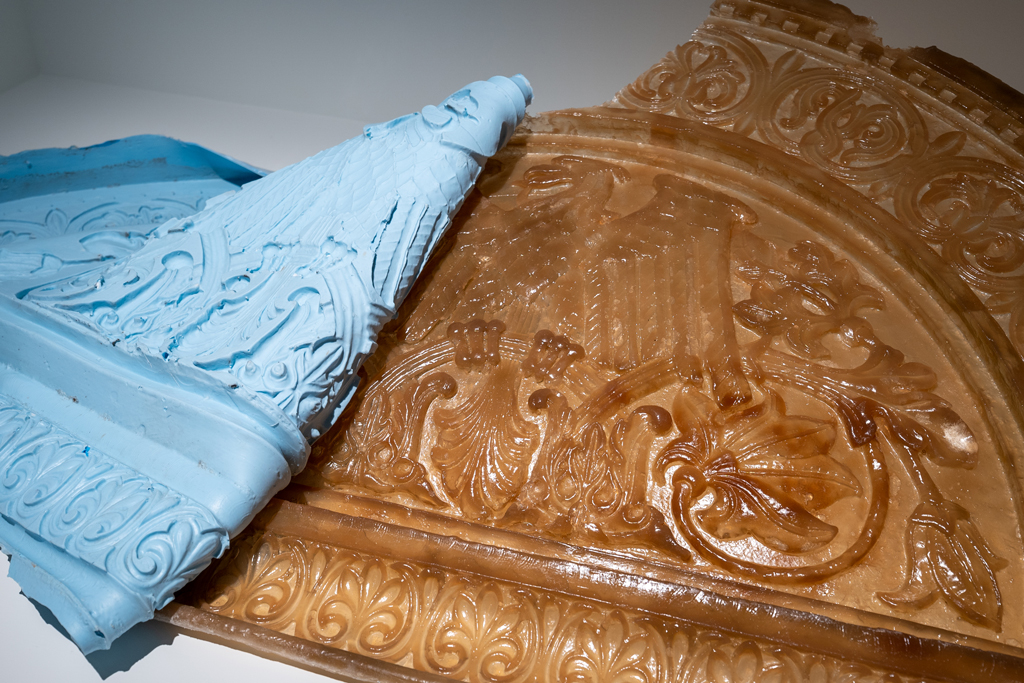
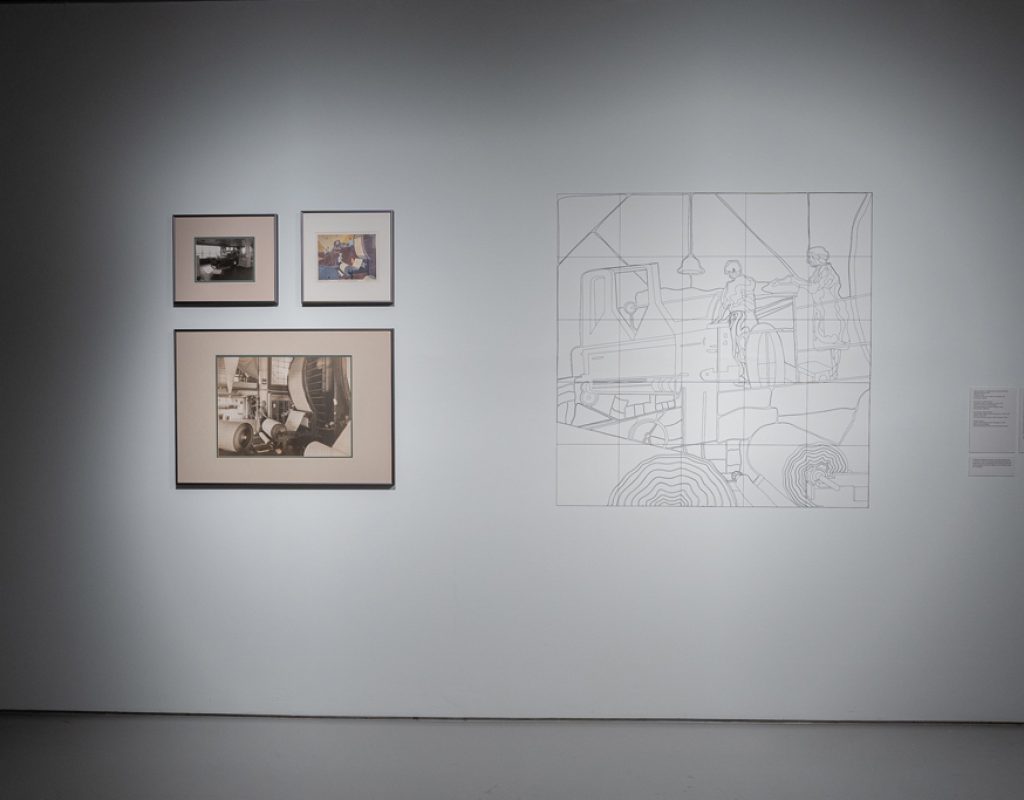
Working Women
Label
DETALLES DEL PROYECTO
The inspiration for Candiani’s Working Women are two 1929-32 photographs attributed to the artist Winold Reiss. One photograph features a female and male worker attending to an offset press on the factory floor of the U.S. Playing Card Company. The other photo is of an offset press at Champion Paper Company. These two scenes form the basis for one of the 16 mosaic murals celebrating Cincinnati’s industries that Reiss produced for the city’s Union Terminal, which was completed in 1933. (Some of these mosaics, including this one, are currently displayed on the west façade of Duke Energy Convention Center in Downtown Cincinnati). Whereas Reiss chose to remove the female figure in his mosaic, Candiani honors her, correcting Reiss’ erasure. The photograph and Candiani’s ceramic composition capture the woman standing at the upper right-hand corner of the machine, engrossed in her work. Working Women was fabricated in Cincinnati at Rookwood Pottery, a company founded in 1880 by a woman, and recognized internationally as the preeminent art pottery producer in the United States. Rendered in flat geometric sections of colorfully glazed ceramic tile, Working Women encapsulates this exhibition’s focus on historic manufacturing and on under-recognized women laborers everywhere, historically and today.
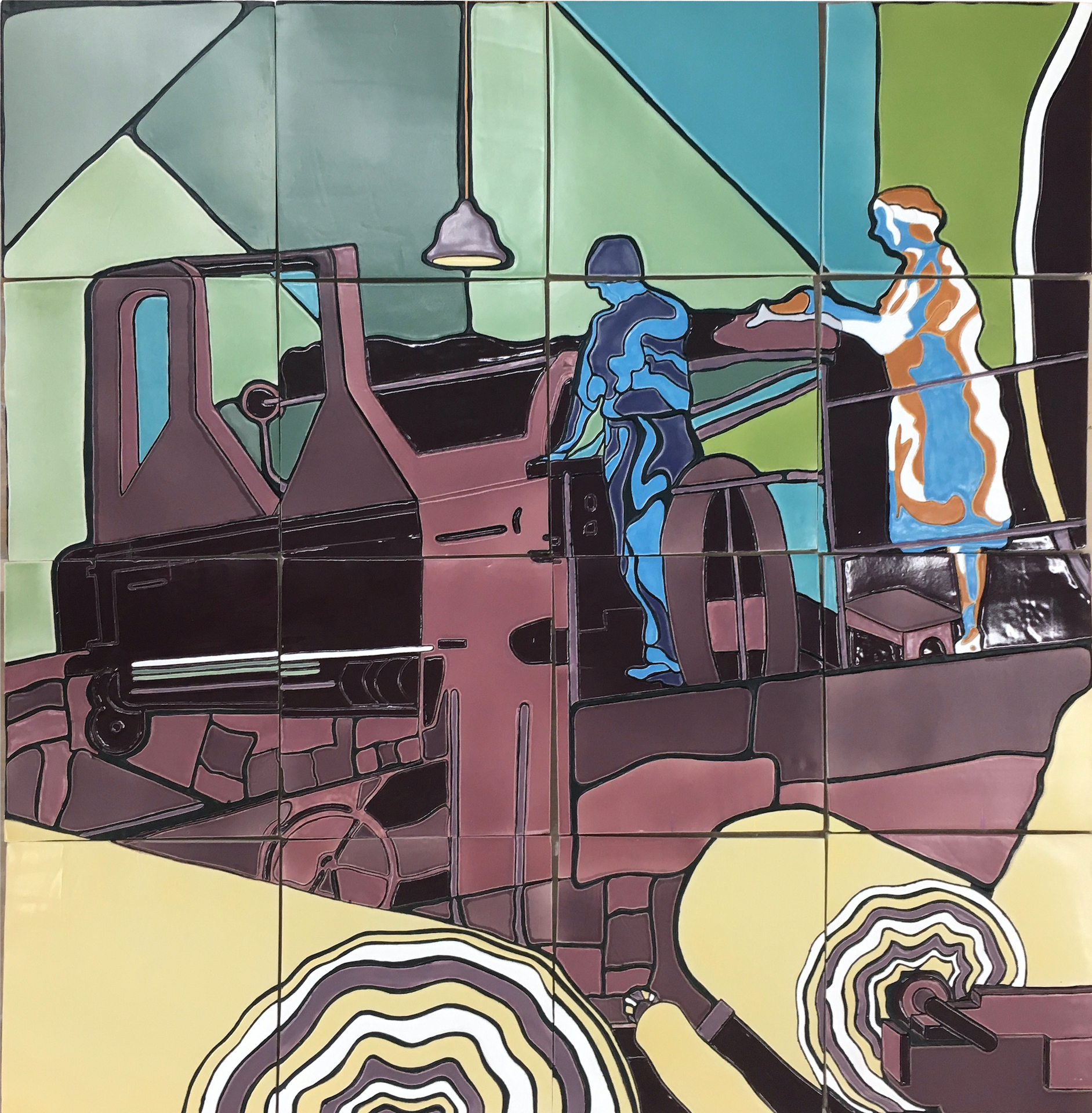
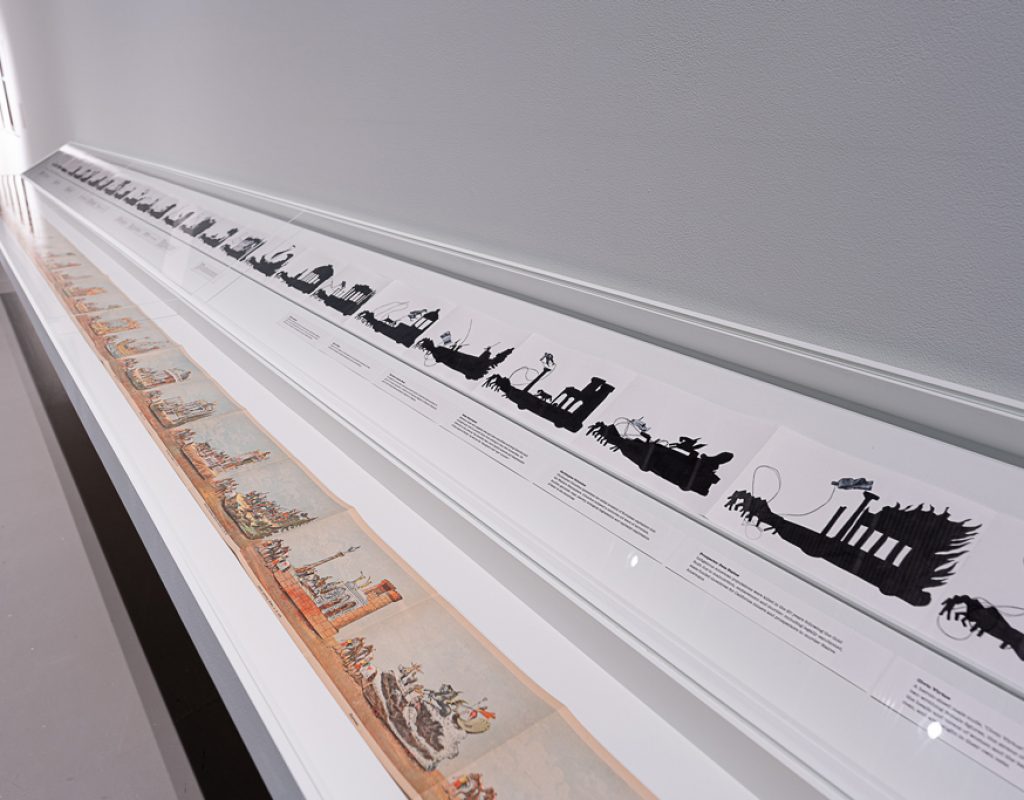
Procession
Label
DETALLES DEL PROYECTO
Many of the Cincinnati Industrial Expositions were launched with opening-day processions that featured floats created by local manufacturing companies to celebrate their products and capabilities. The 1883 procession focused instead on the Roman roots of the
city’s name–Cincinnatus–by replicating the military parades of Roman times. The legendary ruler was called
to serve Rome as its ruler, only to return to his land when his service ended. Cincinnatus’ idyllic concept of civic virtue is here connected with the civic improvements inherent to industrial innovation. Associations with ancient Rome are also evident in the architectural adornment of Cincinnati’s Music Hall, which Candiani references in Divided We Fall, also exhibited here. This book, a product of Cincinnati’s booming printing industry in the 1880s, connects Cincinna- ti to ancient Rome, and, by extension, industry to civility and progress. Candiani questions the validity of these connections in her reinterpretation of the book, Procession, which features omissions, obstructions and abstractions of the original floats pictured in its pages. By redacting these ornate depictions, Candiani presents an alternative lexicon of symbols, reminding us that utopian propaganda was often employed to obscure the reality of the experience of working people.



